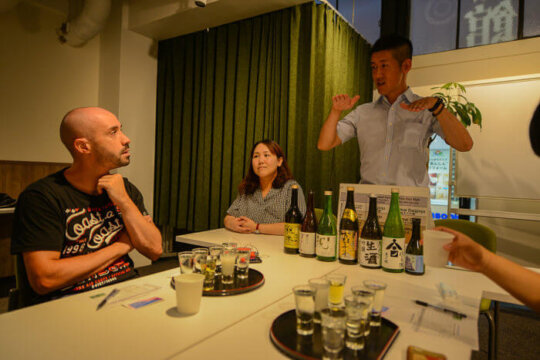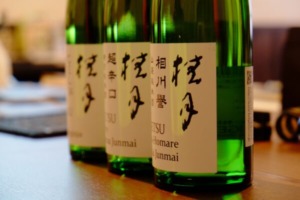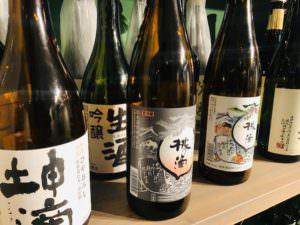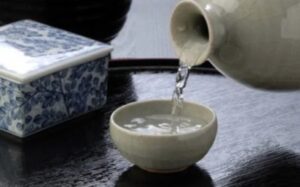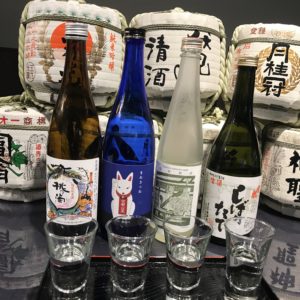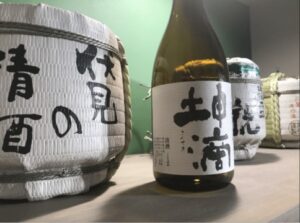We have wrote articles about sake tasting tips and notes and hope you enjoy reading them!
[clink url=”https://kyotosakeexperience.com/ultimate-sake-tasting-notes-1/”]
[clink url=”https://kyotosakeexperience.com/the-top-4-sake-bottles-you-must-taste-in-kyoto/”]
This time we would like to introduce three bottles that you must try while you are in Kyoto!
Key Words
Honjozo: Sake made up of rice, water, koji mold, yeast and a portion of added distilled alcohol. Rice polished 30%, with 70% of each grain remaining.
Ginjo: Sake made up of rice, water, koji mold, yeast and a portion of added distilled alcohol and the rice. Polished to 40% with 60% of each grain remaining.
Daiginjo: Sake made up of rice, water, koji mold, yeast and a portion of distilled alcohol, with rice polished to 50%.
Nigori: A cloudy sake variety of sake
Kotosennen
Brewery: Eikun
Category: Junmai Ginjyo
Polishing percentage: 55%
Rice: Iwai
One of the classical series [Kotosennen]. Compared with Junmai Daiginjo, this one smells not that fruity, but still can slightly feel an apple-like aroma. Tastes definitely dryer than Junmai Daiginjo. Could say it has the typical character of Junmai Ginjo.
Asahi Junmai Kotosennen
Brewery: Tsukinokatsura
Category: Junmai
Polishing percentage: 60%
Rice: Asahi No.4
My first time to try a sake made from the Asahi No.4 sake rice. This is a species of rice which is specially cultivated by farmers in Fushimi, Kyoto. Have a small sip, roll it with your tongue, imagine you are walking by a river side where lines laurel trees, in a silent cool night at an early spring. When it flows through the throat fluently, you can feel a mellow power spread to your whole stomach. What a beautiful Junmai. Like Momonoshizuku, this is also a more polished Junmai, with a higher price than the normal ones.
Tansyu Yamadanishiki
Brewery: Tomio
Category: Junmai Ginjo, unfiltered Namagenshu
Polishing percentage: 55%
Rice: Yamadanishiki
Yamadanishiki, King of sake rice! Un-filtering makes the tastes of Yamadanishiki even more obvious. Fresh smells may make you feel like you are walking in a rain forest. Although it is not diluted, alcohol content is still not so high, just 16%. The same category Junmai Ginjo as Kotosennen, but Kotosennen is more like a well-behaved lady, while Tansyu is more like an outgoing young girl who makes you want to have a date.
Join Our Tour!
When visiting Kyoto, you can’t miss a sake tour of Fushimi – so why not join us on a hunt for the area’s best sake, and best combination with food pairing session and find your favourite along the way?
